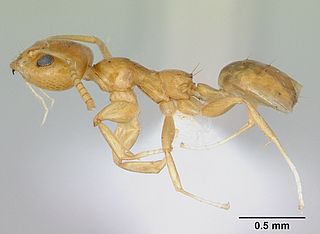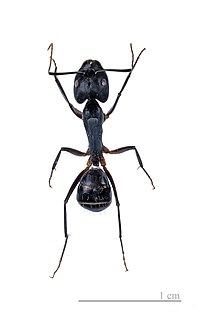
The Formicinae are a subfamily within the Formicidae containing ants of moderate evolutionary development.

Dorylinae is an ant subfamily, with distributions in both the Old World and New World. In 2014, Brady et al. synonymized the previous dorylomorph subfamilies under the Dorylinae.

Ponerinae is a subfamily of ants in the Poneromorph subfamilies group, with about 1,600 species in 47 extant genera, including Dinoponera gigantea - one of the world's largest species of ant. Mated workers have replaced the queen as the functional egg-layers in several species of ponerine ants. In such queenless species, the reproductive status of workers can only be determined through ovarian dissections.

Myrmicinae is a subfamily of ants, with about 140 extant genera; their distribution is cosmopolitan. The pupae lack cocoons. Some species retain a functional sting. The petioles of Myrmicinae consist of two nodes. The nests are permanent and in soil, rotting wood, under stones, or in trees.
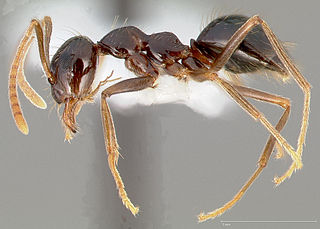
Plagiolepidini are an ant tribe from the subfamily Formicinae.

Tetramorium is a genus of ants in the subfamily Myrmicinae that includes more than 520 species.

Crematogastrini is a tribe of myrmicine ants with 64 genera and 8 fossil genera.

Feroponera is a monotypic Afrotropical genus of ants in the subfamily Ponerinae containing the single species Feroponera ferox. The genus is known only from a few specimen collected from an unoccupied termitary in Cameroon.

Proceratiinae is a subfamily of ants in the poneromorph subfamilies group, with three extant genera, of which most are tropical or subtropical, although overall distribution is worldwide.
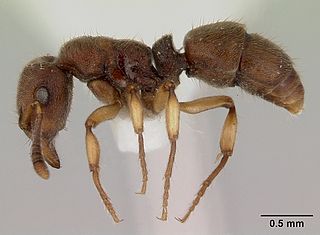
Heteroponerinae is a subfamily of ants in the poneromorph subfamilies group containing three genera in one tribe. The subfamily was created in 2003 when Barry Bolton divided the Ponerinae subfamily into six subfamilies.

Ectatomminae is a subfamily of ants in the poneromorph subfamilies group containing four extant and three extinct genera in two tribes. The subfamily was created in 2003 when Barry Bolton divided the Ponerinae subfamily into six subfamilies.
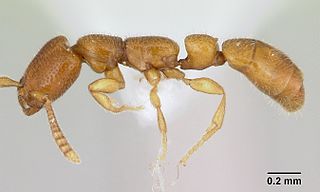
Amblyoponinae is a subfamily of ants in the poneromorph subfamilies group containing 13 extant genera and one extinct genus. The ants in this subfamily are mostly specialized subterranean predators. Adult workers pierce the integument of their larvae to imbibe haemolymph, earning them the vernacular name dracula ants

Nesomyrmex is a genus of ants in the subfamily Myrmicinae. The genus is distributed in the Neotropical, Afrotropical and Malagasy regions. Most species live in arid climates, but some are known from the rainforest. They nest in soil or in trees. Little is known about their biology.

Promyopias is an Afrotropical genus of ant in the subfamily Ponerinae containing the single species Promyopias silvestrii. The rare genus has previously been regarded as a separate genus, as a subgenus and as a provisional synonymy, but was reinstated at genus-rank in 2008.
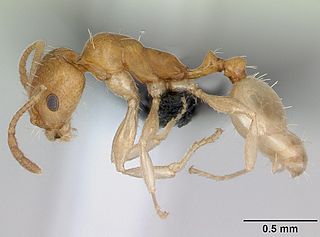
Royidris is a Malagasy genus of ants in the subfamily Myrmicinae. Described in 2014, the genus contains 15 species endemic to Madagascar.

Leptomyrmecini is a tribe of Dolichoderinae ants with 16 genera and two extinct genera.

Ponerini is a tribe of Ponerinae ants with 46 genera and 6 extinct genera.

Epelysidris brocha is the only species of ant in the genus Epelysidris. Described by Barry Bolton in 1987 in Borneo, the species is only known from soil in tropical and moss rainforests, based on two known specimen collections.



